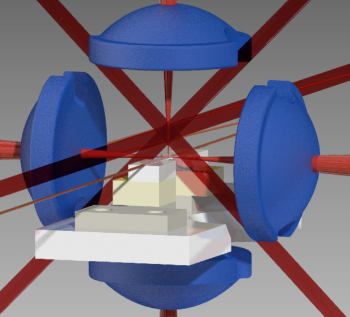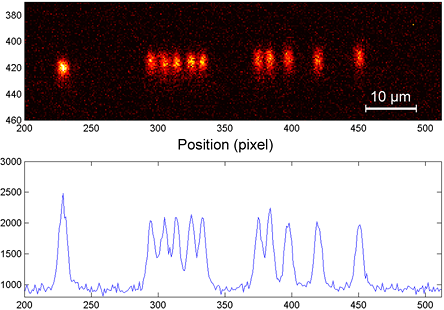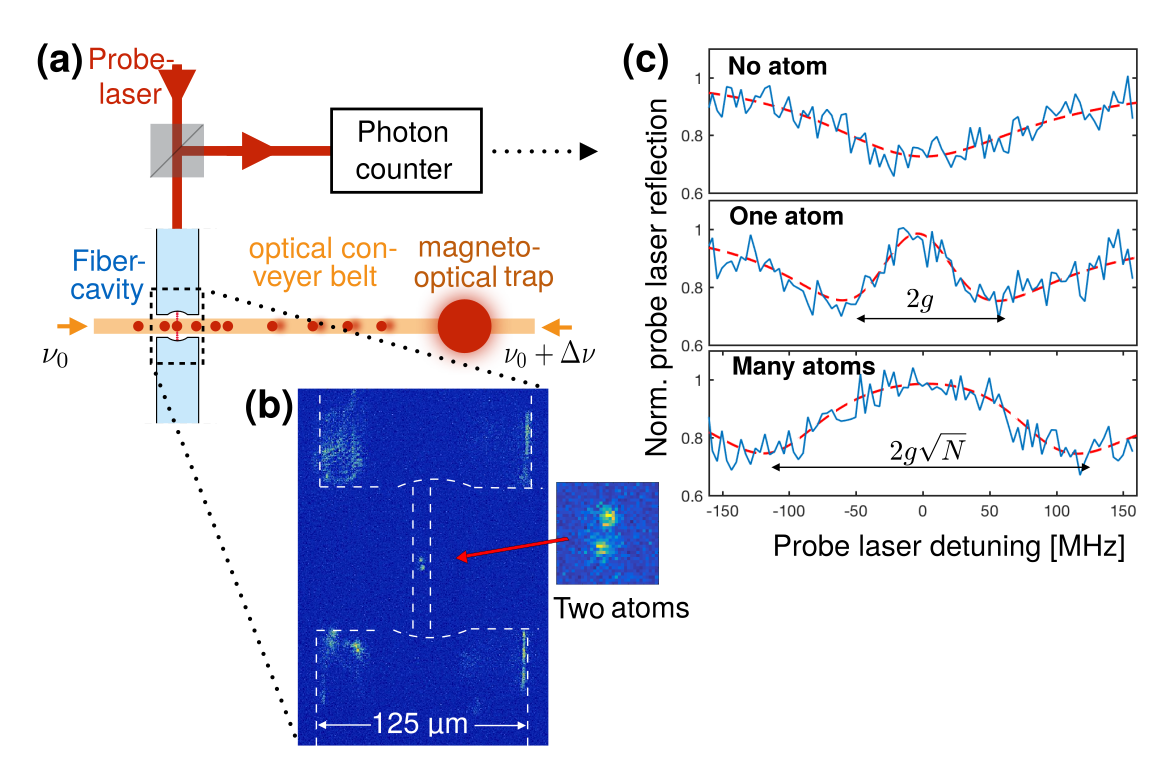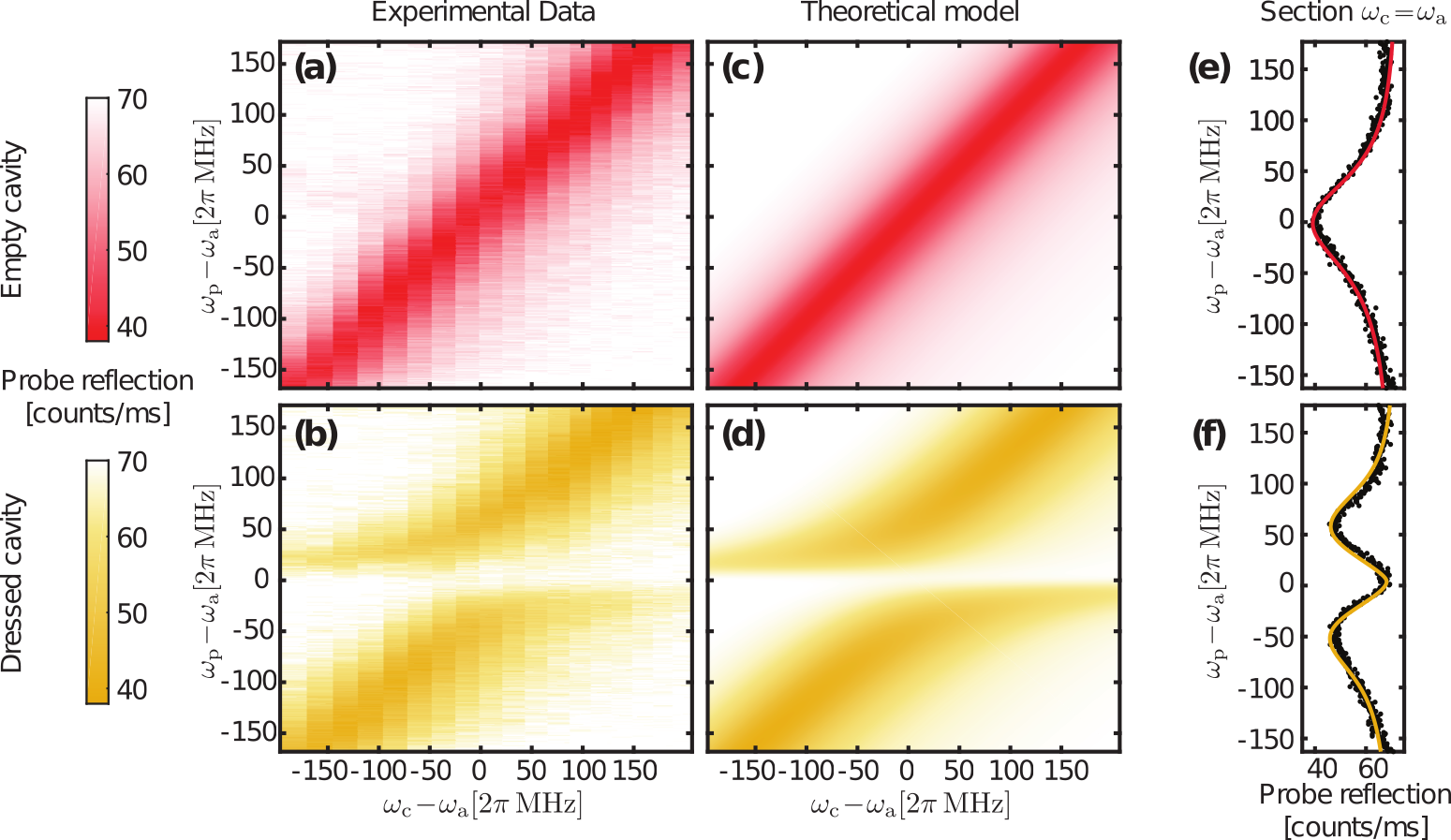The goal of the fiber cavity QED experiment is to implement a photonic quantum memory, i.e., to store the quantum information encoded in single photons within an atomic ensemble. This quantum information can then be read back at a later time in the form of a photon by application of a read pulse. Such quantum memories are important components of quantum repeaters, which one day may allow for long-distance quantum communication.
In our system, the single photons will be stored in a small ensemble of cold neutral rubidium atoms trapped in a 3D optical lattice inside a fiber-based optical cavity. Using atomic ensembles permits enhanced collective photon absorption into spin-wave (Dicke) states, while the cavity provides strong coupling between the cavity field mode and the atoms due to its small mode volume via the Purcell effect. The fiber-based cavity is notably much smaller than the conventional cavity used in our old cavity QED experiment. Both enhancement effects from using atomic ensembles as well as the small mode volume together should provide efficient photon storage and retrieval already for medium-finesse cavities which usually have better mirror transmission. The direct fiber coupling of our fiber cavity further reduces optical coupling losses.

Experimental Setup :-
Technologically speaking, our apparatus aims at miniaturization and integration of atomic and photonic devices. The 125 µm diameter fiber mirrors are produced in our group by CO2-laser machining in our fiber end facet machine. The aspheric lenses (NA=0.5) integrated into the holder inside the vacuum allow for high-resolution imaging of the trapped atoms from two orthogonal directions, and also serve to focus the dipole-trap beams of the 3D optical lattice down to a few micrometers for localozation of the atoms within the cavity mode.

We trap a single or few rubidium-87 atoms in a 3D dipole trap at the center of our miniaturized fiber cavity resonator. First the atoms at few tens of micro-Kelvin temperature are loaded from a MOT (located few millimeters away from cavity center) to the 1D dipole trap. Then the atoms are transported to the cavity center using optical conveyer belt of the 1D dipole trap beams.

Fig. 3: Image of individual atoms trapped in one standing-wave optical dipole trap and illuminated by an optical molasses.

Fig. 4: (a) Experimental schematics for loading the atoms in the 3D dipole trap at the cavity center. (b) Specific realization where two atoms are trapped inside the fiber resonator. (c) Dressing of the cavity reflection in the presence of atoms.
Cavity QED with a single atom :-

Fig. 5 : 2D-Maps for the spectrum of the bare cavity ( (a) experimental finding with (b) theoretical fit) and the atom-cavity coupled system ( (b) experimental finding with (d) theoretical fit), when probed along the cavity axis using a weak beam. Horizontal and vertical axis are the detunings of the cavity resonance and the probe beam with respect to the atomic transition.









